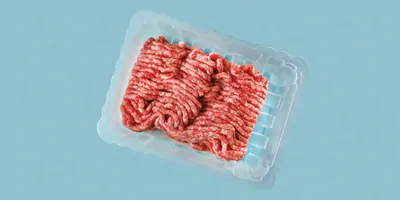Laboratory cell cultures could change what we eat and drink. Scientists use cell cultures for many things, from exploring basic biology to studying diseases and developing treatments, but other applications are underway that could create new products in grocery stores.
From the VTT Technical Research Centre of Finland Ltd. in Espoo, head of plant biotechnology Heiko Rischer says that his team focuses “on plant cell cultures as production hosts for food.” His team investigates many different plants, one of which is coffee.
According to the British Coffee Association, coffee is the most popular drink worldwide with around two billion cups consumed every day. This popularity explains part of the interest in Rischer’s work, but he adds that coffee is “a very interesting case due to the many problems in conventional production.” These problems range from socioeconomic challenges and concerns of the impact of climate change to diseases that threaten coffee crops and the environmental impact of the industry.
Cell culturing could be used as a way to address these coffee crises. “We grow plant cells derived from a coffee plant in nutrient medium containing minerals, sugar, and growth regulators,” explains Rischer. “The biomass grown in bioreactors is then harvested and dried—resulting in a beige powder.” Like coffee beans, that powder is roasted to a brown color. After that, it’s ready for brewing. “In contrast to the conventional process, there is no bean and consequently no grinding,” adds Rischer.
Although Rischer and his colleagues solved the scientific challenges of culturing coffee, more work lies ahead. “We were able to showcase the proof of concept,” he says. “The next stages are regulatory approval, product development, and marketing.” For those steps, Rischer will work in collaboration with commercial partners.
This all sounds exciting, but coffee drinkers around the world will ask one important question: How does it taste? To that, Rischer replies: “According to our sensory evaluation panel, it is quite close to conventional products, and chemical analysis shows that the major flavor components and caffeine are present.” He adds, however, that “developing a product certainly requires optimization of all processes.”
Cells to sandwiches
Toward the end of working on her PhD, studying protein biochemistry and cell biology at Yale University, Kate Krueger became interested in cell-cultured proteins. “I realized that my traditional scientific training could be very useful in this new discipline, so I jumped in,” she says.
Today, she runs Helikon Consulting in Cambridge, MA. She describes this as “a frontier biotech consulting firm that advises investors and others on novel biotechnologies in food, beauty, and materials.” As Kreuger notes, there are many strategies used to make cultured food products. “In the case of protein production, generally called precision fermentation, the DNA coding for the desired protein is inserted into another organism. That organism—usually yeast, microflora, or a related type of microbiota—can then make the desired protein in bulk,” she explains. Some examples of cultured protein products on the market include the Impossible Burger made from the leghemoglobin protein and Perfect Day Foods’ whey protein.
The whey protein from Perfect Day Foods provides another example of the green nature of making foods in culture. The company claims that a third-party study showed “that Perfect Day’s whey protein production reduces water use up to 99 percent, greenhouse gas emissions up to 97 percent, and non-renewable energy use up to 60 percent compared to conventional production methods.”
One of the most well-known cultured proteins enabled the creation of the Impossible Burger, which consists of a mixture of proteins from soy and potatoes, fats from coconut and sunflower oils, plus cellulose and starch binders. But the meat-like taste comes from the leghemoglobin protein, which is a plant protein similar to hemoglobin, including its red color. With this product making its way into an Impossible Whopper at Burger King and an Impossible Cheeseburger at Red Robin, this cultured protein appears poised for expansion.
“With this product making its way into an Impossible Whopper at Burger King and an Impossible Cheeseburger at Red Robin, this cultured protein appears poised for expansion.”
To make more than a food protein, a manufacturer takes different steps. “In the case of cell-cultured foods, cells are isolated from an animal, grown in a bioreactor, and depending on the strategy, supported on a scaffold material to form a 3D, structured meat product,” explains Krueger. “Cultured meat products are much harder to find—only two restaurants in Singapore currently sell them.” She adds, “For cultured meat, it is still early days and very few people have tried it.” Even Krueger hasn’t tasted a cultured meat.
A variety of experimental approaches are also underway. As an example, a team of scientists in China discussed ways that muscle stem cells could be used to culture meats. As these scientists reported: “In the emerging area of cultured meat, meat products are manufactured with [muscle stem cells] using theory and technology from the fields of cell culture, tissue engineering, and food processing.”
In addition, scientists at The Good Food Institute in Washington, DC, explored some of the challenges of developing scaffolds for cultivated meat in 3D. As these scientists point out: “For cultivated meat to fully mimic conventional meat’s organoleptic and nutritional properties, innovations in scaffolding technology are required.”
Scientists working in cell culture labs just a few decades ago likely didn’t envision using similar methods to culture a cup of coffee or a sandwich. Now, it has become common to see products made from cell cultures in grocery stores and restaurants, begging the question, what’s next for cell culture in the food and beverage industry?










